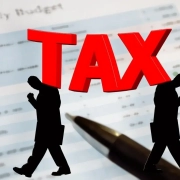What is a dividend reinvestment plan?
Table of Contents
ToggleAre you looking for a unique and smart way to manage your investments? Look no further than the dividend reinvestment plan (DRI).
DRI is a great option for investors who want to make their money work hard for them by automatically reinvesting and compounding profits back into shares or other investments.
In this blog post, we’ll cover everything you need to know about what a dividend reinvestment plan is, how it works, the benefits of using one, where people can get started with setting up such plans and more!
What is a dividend reinvestment plan (DRP)?
As an investor, it’s essential to understand what a dividend reinvestment plan (DRP) is and how it can benefit you.
A dividend reinvestment plan (DRP) is a program in which shareholders can choose to receive their dividends in the form of additional shares rather than cash. This allows for gradual accumulation of shares and potentially increased returns over time.
DRPs are a popular choice among long-term investors, as they provide a way to reinvest dividends back into the company without incurring additional costs or commissions.
It’s important to note that not all companies offer DRPs, so it’s worth doing your research to determine which ones do and if it’s the right choice for your investment strategy.

Benefits of DRP for investors
A DRP is an attractive investment option for shareholders seeking to increase their holdings in a company, without incurring additional transaction costs.
In Australia, DRPs have become increasingly popular due to their numerous benefits.
- Investors who opt for a DRP can take advantage of the compounding effect, where dividends are reinvested and generate additional returns over time. This reinvestment helps to maximise the total return on investment.
- DRPs can also be tax-efficient as the income is reinvested, allowing investors to defer paying taxes on dividend income.
By choosing to reinvest the dividend, shareholders can expand their holdings and potentially increase their overall return on investment. Therefore, a DRP is an excellent investment option for individuals seeking to grow their wealth over the long-term.
Requirements for opening a DRP account
Opening a DRP account may seem daunting, but with the right information, it can be a straightforward process.
- You must be a shareholder in the company offering the DRP.
- You will need to provide personal identification, such as your driver’s licence or passport, as well as relevant tax information.
The minimum investment amount may vary depending on the DRP, so it is important to research the specific requirements of the plan beforehand.
Once your application has been accepted and processed, you will begin receiving dividends in the form of additional shares in the company, rather than cash. This can be a useful way to reinvest in a company’s growth and increase the value of your investment portfolio over time.
Overall, with careful consideration and research, opening a DRP account can be a rewarding and valuable addition to your investment strategy.
How to open and manage a DRP account?
If you’re looking to secure your financial future, opening a DRP account can be a great option for those living in Australia. But where do you start?
- First, it’s important to understand what a DRP account is and how it works. Essentially, a DRP account is a type of investment account that allows you to automatically reinvest any dividends you receive into more shares of the company. This means that you can potentially see greater returns over time without having to constantly monitor and adjust your portfolio.
- To get started, you’ll need to choose a company that offers a DRP plan and sign up for the program. From there, it’s important to monitor and adjust your portfolio as needed to ensure that you’re on track to meet your financial goals.
With a bit of patience and know-how, managing a DRP account can be a great way to take control of your financial future.

Dividend rates with different investment products
Investing your hard-earned money can be a daunting task, especially when considering the various investment products available. With different options come varying levels of risk and reward, including dividend rates.
It’s important to understand the dividend rates for different investments, such as shares, exchange-traded funds (ETFs), and mutual funds. Shares, for example, can offer higher dividend rates than other options, but are typically a riskier investment due to market fluctuations. ETFs and mutual funds, on the other hand, can provide more stability and diversification, but may have lower dividend rates.
Whatever investment product you choose, make sure to do thorough research and consider your personal financial goals to make an informed decision.
Tax implications on dividends from DRP investments
Investing in DRP can be both rewarding and challenging when it comes to tax implications.
Depending on individual circumstances, dividends received from DRP investments may be subject to different tax rates and regulations. For instance, if the DRP shares are held for at least 45 days, investors may be eligible for franking credits that can help reduce the tax payable on dividends.
On the other hand, if the DRP shares are sold within 12 months of acquisition, any capital gain realised may be subject to higher tax rates.
It’s important for investors to understand these nuances and seek professional advice to maximise their returns while complying with tax laws.

Dividend reinvestment plans (DRPs) provide investors with an interesting and profitable investment option. There are a range of benefits associated with these investment plans, including a consistent income stream from dividends, lower brokerage fees on dividends compared to traditional investments, and the ability to start investing with small amounts of money.
Of course, just like any other type of investment, there are certain requirements that must be met before opening and managing a DRP account. And depending on the type of shares you invest in, your dividend rate could vary.
Finally, it is also important to familiarise yourself with the tax implications surrounding dividends when thinking about long-term financial planning.









